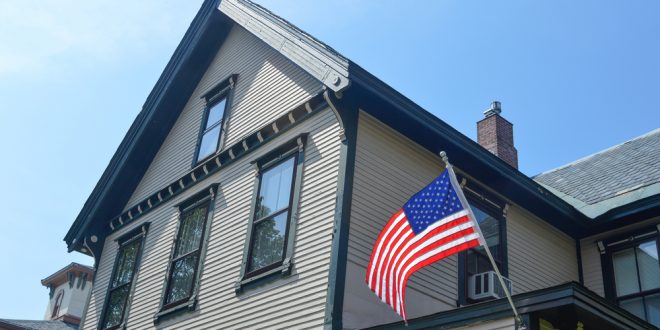Higher mortgage rates did a little to stop home price momentum in March. US home values leaped by 20.6% in March from the year before, according to the S&P CoreLogic Case-Shiller national home price index, up from a 20% increase in February and marking the largest year-over-gain in the index’s 35-year history.
Expectations that mortgage rates would move even higher, as the Fed combats inflation may have fueled buyers into action in March. The average rate on the 30-year mortgage increased from 3.76% at the start of March to 4.67% at the end of the month. The rate hit 5.3% in mid-May.
The acceleration occurred even as mortgage rates jumped nearly a full percentage point during the month. Americans who expected deceleration in the growth rate of US home prices come to realize a different reality. The strength of the composite indices suggests very broad strength in the housing market, which investors continue to observe.
The index for the largest 20 cities posted a 21.2% annual gain, up from 20.3% a month earlier, according to the report. All 20 cities reported double-digit price increases in March, with price growth in 17 cities accelerating versus February.
Tampa led the 20-city index for home price growth, increasing 34.8% year over year, while Phoenix and Miami registered a 32.4% and 32.0% annual increase, respectively. March’s price increase ranked in the top quintile of historical experience for every city, and in the top decile for 19 of them.
A lack of inventory of homes for sale is a big reason propping up high home prices. Total housing inventory at the end of April totaled 1,030,000 units, up 10.8% from March and down 10.4% from one year ago (1.15 million). Unsold inventory sits at a 2.2-month supply at the present sales pace, up from 1.9 months in March and down from 2.3 months in April 2021. A balanced market would be 6 months supply.
A more moderate pace of listing price growth is expected, with for-sale homes that sit for longer than the record pace as seen in recent months. Mortgage costs are nearly 50% higher today than they were at this time last year. Unless incomes grow by double-digits or mortgage rates dip, neither of which seems especially likely, households will have to look for other options.
There are plenty of signs that buyers are pulling back. New home sales plummeted 16.6% to a seasonally adjusted annual rate of 591,000 units last month, the Commerce Department said last week. Existing home sales fell 2.4% to a seasonally adjusted 5.61 million units in April from a month earlier, while pending home sales for April fell 3.9%, according to the National Association of Realtors.
Home prices are decreasing, with one in five (19.1%) home sellers dropping their price in May, the highest level since October 2019, according to a Redfin report. At the same time, 40-year high inflation is putting pressure on consumers’ wallets and overall sentiment.
The US central bank tries to tame inflation and slow demand, leading to a slight normalizing of the housing market, but the lack of supply against robust demographic demand will keep price appreciation elevated, so don’t expect a decline in prices anytime soon.

 Noor Trends News, Technical Analysis, Educational Tools and Recommendations
Noor Trends News, Technical Analysis, Educational Tools and Recommendations




